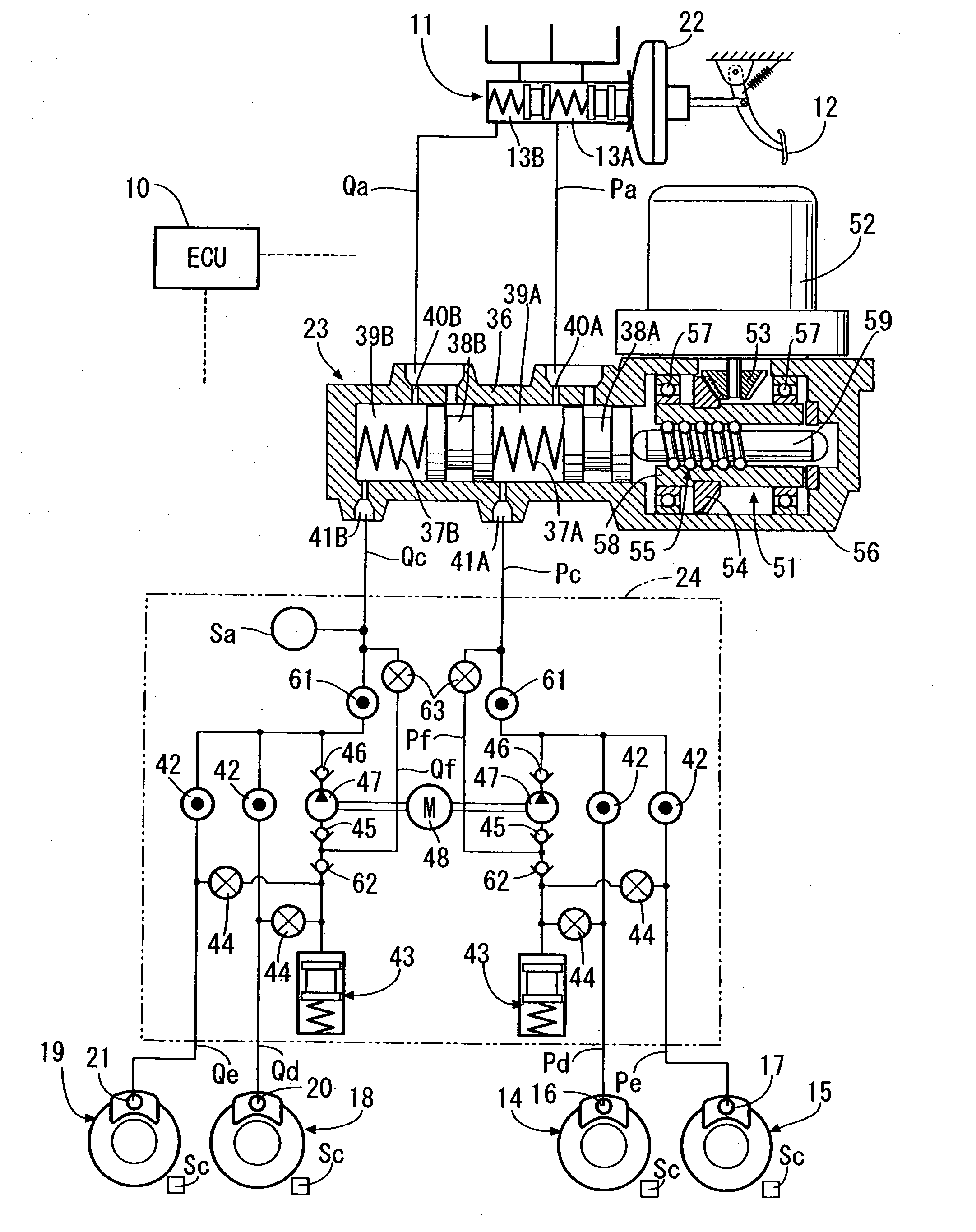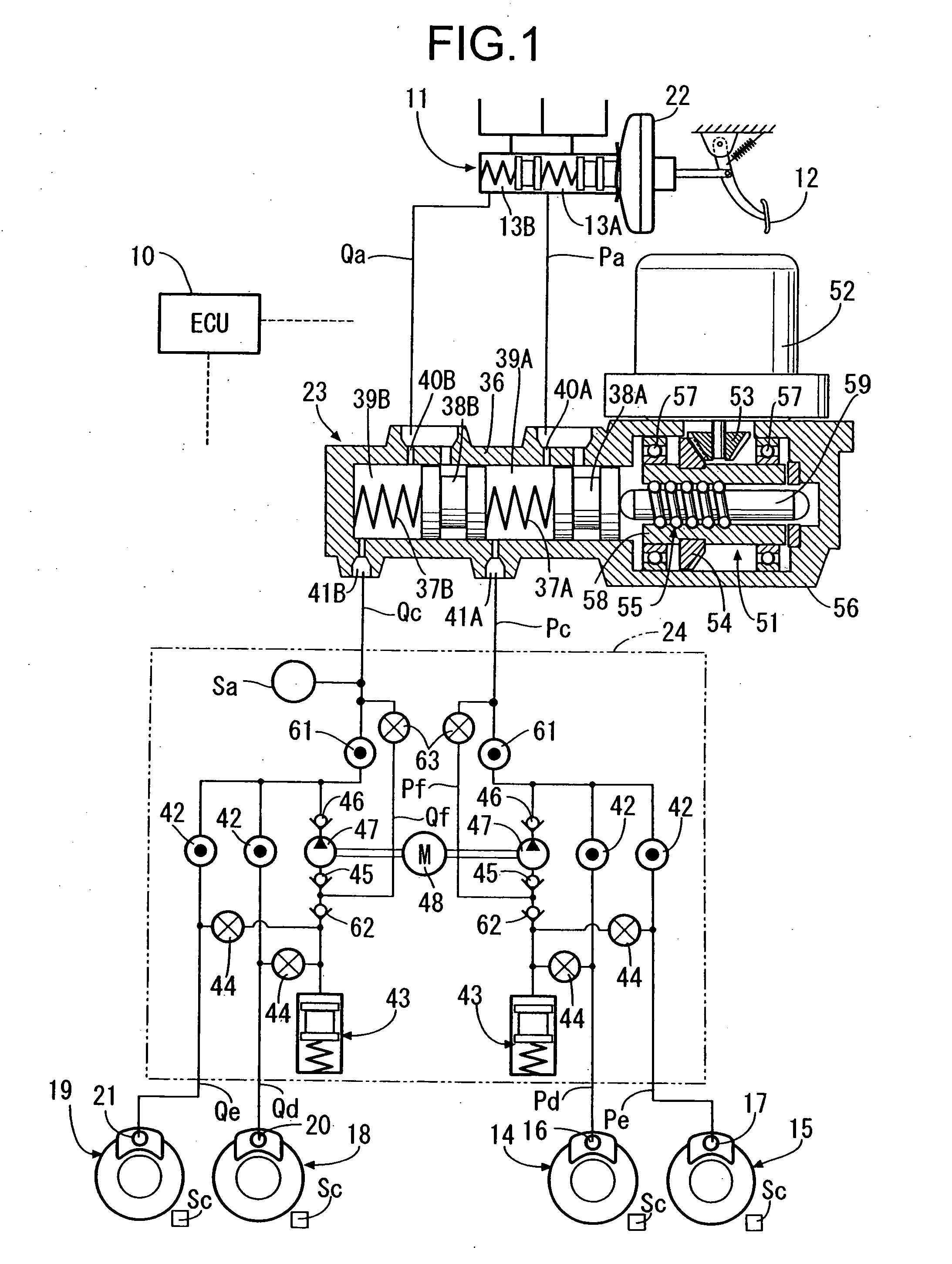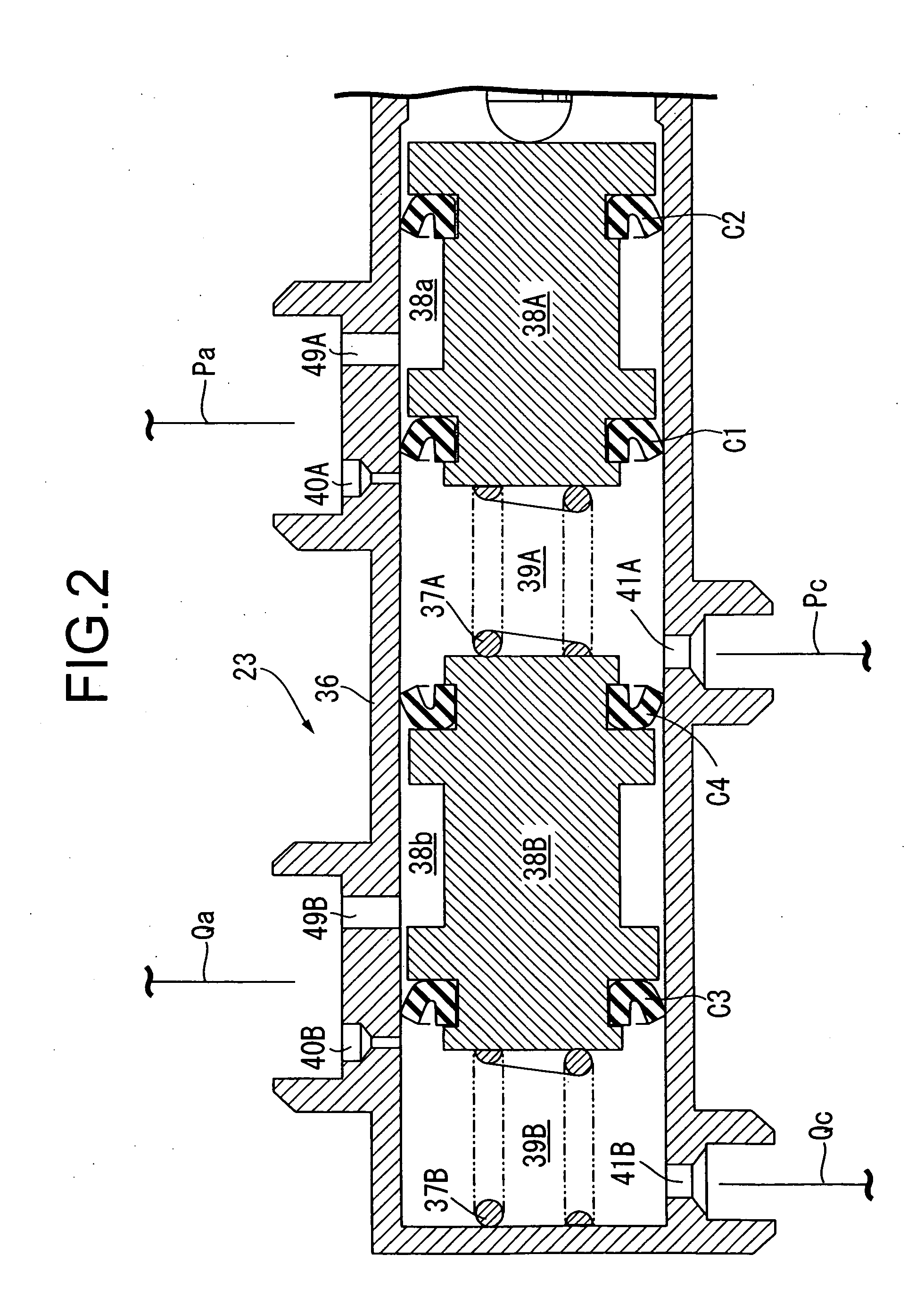Braking system and automatic brake actuator
a technology of automatic brake actuator and braking system, which is applied in the direction of braking system, rotary clutch, fluid coupling, etc., can solve the problems of difficulty in generating hydraulic pumps in the abs and/or in the vsa system, noise and vibration, and precision, and achieve the effect of improving the braking feeling
- Summary
- Abstract
- Description
- Claims
- Application Information
AI Technical Summary
Benefits of technology
Problems solved by technology
Method used
Image
Examples
Embodiment Construction
[0031]An exemplary embodiment of the present invention will be described below with reference to FIGS. 1 to 3.
[0032]As shown in FIG. 1, a tandem-type master cylinder 11 is provided with a vacuum booster 22. The master cylinder 11 includes first hydraulic chambers 13A and 13B that output brake-fluid pressure in accordance with the pedal force generated when a driver depresses a brake pedal 12. The first hydraulic chamber 13A is connected, for example, to a wheel cylinder 16 of a disc-brake apparatus 14 of the left-hand-side front wheel via fluid passages Pa, Pc, and Pd. In addition, the first hydraulic chamber 13A is connected, for example, to a wheel cylinder 17 of a disc-brake apparatus 15 of the right-hand-side rear wheel via fluid passages Pa, Pc, and Pe. The other first hydraulic chamber 13B is connected, for example, to a wheel cylinder 20 of a disc-brake apparatus 18 of the right-hand-side front wheel via fluid passages Qa, Qc, and Qd. In addition, the first hydraulic chamber ...
PUM
 Login to View More
Login to View More Abstract
Description
Claims
Application Information
 Login to View More
Login to View More - R&D
- Intellectual Property
- Life Sciences
- Materials
- Tech Scout
- Unparalleled Data Quality
- Higher Quality Content
- 60% Fewer Hallucinations
Browse by: Latest US Patents, China's latest patents, Technical Efficacy Thesaurus, Application Domain, Technology Topic, Popular Technical Reports.
© 2025 PatSnap. All rights reserved.Legal|Privacy policy|Modern Slavery Act Transparency Statement|Sitemap|About US| Contact US: help@patsnap.com



